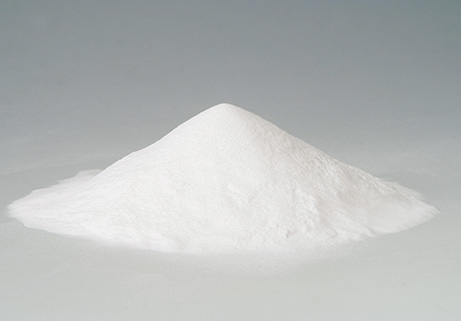Microsilica powder is a silica powder material made of natural quartz ore, fused silica, etc., through multiple processes such as grinding, precision grading, and impurity removal. It has high insulation, high thermal conductivity, high thermal stability, Acid and alkali resistance, wear resistance, low thermal expansion coefficient, low dielectric constant and other characteristics, widely used in copper clad laminate industry, epoxy molding compound industry, electrical insulation material industry and adhesive industry, etc.

In order to improve the interface bonding between microsilica powder and organic polymer materials and improve its application performance, it is generally necessary to modify the surface of microsilica powder. The key to the surface modification of microsilica powder is how to make the modifier uniformly dispersed on the surface of the particles, and at the same time ensure the chemical bonding conditions between the modifier and the particle surface. The specific surface area of ultra-fine micro-silica powder is relatively large, how to make the modifier uniformly disperse on the surface of the particle is a difficult problem for micro-silica powder manufacturers.
1. Surface modifier
Silane coupling agent is the most commonly used modifier for surface modification of silicon micropowder. It can change the hydrophilicity of silicon micropowder into an organophilic surface, and can also improve the wettability of organic polymer materials to its powder, and through functional groups Make silicon micropowder and organic polymer materials achieve a strong covalent bond interface combination.
However, the application effect of silane coupling agent is related to the selected type, dosage, hydrolysis, substrate characteristics, application occasions, methods and conditions of organic polymer materials. Therefore, in order to use a good silane coupling agent, it is necessary to carefully study its structure, properties and the mechanism of its interaction with silica powder, so as to correctly select and use a good silane coupling agent.
2. Surface modification process
Because the dry process is relatively simple and the production cost is relatively low, the surface modification of domestic silicon micropowder basically adopts the dry process. However, the specific surface area of ultra-fine silica powder is relatively large, and the treatment agent cannot be uniformly dispersed on the surface of the particles only by mechanical dispersion of equipment, so the effect of dry modification is relatively poor.
Wet modification is carried out under liquid phase conditions. The modifier can disperse the surface of the particles relatively uniformly. Generally speaking, the modification effect is better, but the wet modification process is complicated, requiring drying and depolymerization processes, and the production cost is relatively high. High, but the effect of wet modification is better.
3. Surface modification equipment
The selection of surface modification equipment is a crucial part of the surface modification of silica powder. When selecting surface modification equipment, the following requirements should be considered:
One is that the surface modification equipment can heat and keep the microsilica powder under dynamic conditions, and the holding time can be automatically controlled.
The second is to have an exhaust device, which can discharge the water removed before and after the surface modification in the form of steam, so that the silane coupling agent and the powder can undergo a condensation reaction to achieve the effect of forming a covalent bond.
The third is to ensure that the microsilica powder is in a high-speed dynamic state in the surface modification machine.
Fourth, the surface modification equipment should meet the requirements of adding surface modifiers.
Fifth, in order to solve the false agglomeration and hard agglomerates produced in the surface modification, effective grading must be carried out, and special grading equipment should be provided for supporting.
